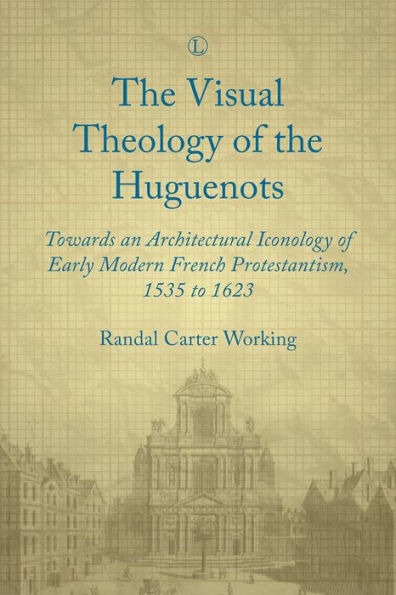Visual Theology of the Huguenots: Towards an Architectural Iconology of Early Modern French Protestantism 1535 to 1623
The role of architecture within the French Reformed tradition has been of recent scholarly interest, seen in the work of Helene Guicharnaud, Catharine Randall, Andrew Spicer, and others. Few, however, have investigated in depth the relationship between Reformed theology and architectural forms. In The Visual Theology of the Huguenots, Randal Carter Working explores the roots of Reformed aesthetics, set against the background of late medieval church architecture. Indicating how demonstrably important the work of Serlio is in the spreading of the ideas of Vitruvius, Working explains the influence of classical Roman building on French Reformed architecture. He follows this with an examination of five important Huguenot architects: Philibert de l'Orme, Bernard Palissy, Jacques-Androuet du Cerceau, Salomon de Brosse, and Jacques Perret. The distinct language of Huguenot architecture is revealed by his comparative analysis of three churches: St Pierre in Geneva, a medieval church overhauledby the Reformers; St Gervais-St Protais, a Parisian Catholic church whose facade was completed by the French Reformed architect Salomon de Brosse; and the temple at Charenton, a structure also designed and built by de Brosse. These three buildings demonstrate how the contribution of Huguenot architecture gave expression to Reformed theological ideas and helped bring about the renewal of classicism in France.
1123515622
Visual Theology of the Huguenots: Towards an Architectural Iconology of Early Modern French Protestantism 1535 to 1623
The role of architecture within the French Reformed tradition has been of recent scholarly interest, seen in the work of Helene Guicharnaud, Catharine Randall, Andrew Spicer, and others. Few, however, have investigated in depth the relationship between Reformed theology and architectural forms. In The Visual Theology of the Huguenots, Randal Carter Working explores the roots of Reformed aesthetics, set against the background of late medieval church architecture. Indicating how demonstrably important the work of Serlio is in the spreading of the ideas of Vitruvius, Working explains the influence of classical Roman building on French Reformed architecture. He follows this with an examination of five important Huguenot architects: Philibert de l'Orme, Bernard Palissy, Jacques-Androuet du Cerceau, Salomon de Brosse, and Jacques Perret. The distinct language of Huguenot architecture is revealed by his comparative analysis of three churches: St Pierre in Geneva, a medieval church overhauledby the Reformers; St Gervais-St Protais, a Parisian Catholic church whose facade was completed by the French Reformed architect Salomon de Brosse; and the temple at Charenton, a structure also designed and built by de Brosse. These three buildings demonstrate how the contribution of Huguenot architecture gave expression to Reformed theological ideas and helped bring about the renewal of classicism in France.
28.0
In Stock
5
1

Visual Theology of the Huguenots: Towards an Architectural Iconology of Early Modern French Protestantism 1535 to 1623
212
Visual Theology of the Huguenots: Towards an Architectural Iconology of Early Modern French Protestantism 1535 to 1623
212Paperback(Reprint)
$28.00
28.0
In Stock

Product Details
| ISBN-13: | 9780718894696 |
|---|---|
| Publisher: | The Lutterworth Press |
| Publication date: | 02/23/2017 |
| Edition description: | Reprint |
| Pages: | 212 |
| Product dimensions: | 5.98(w) x 9.02(h) x (d) |
About the Author
From the B&N Reads Blog
